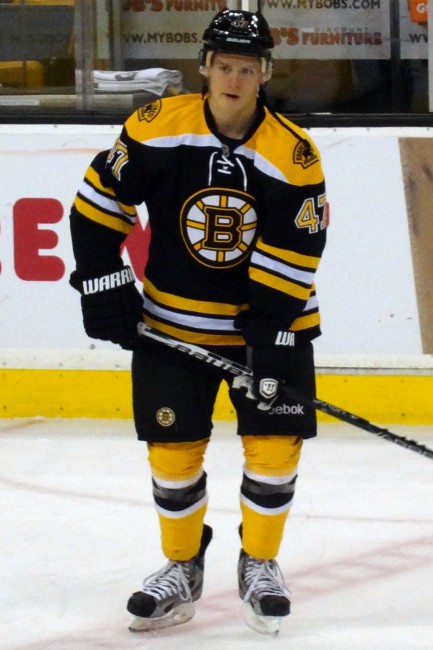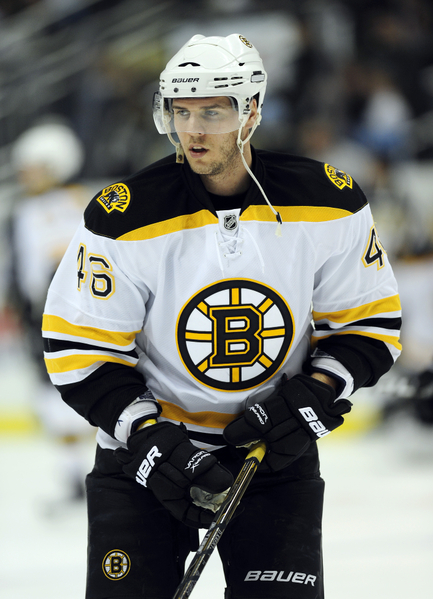Since the 2009 trade that sent Phil Kessel to Toronto, the Bruins power play has struggled mightily. Several months after the Kessel trade, the unit was dealt another crushing blow, losing their top center, Marc Savard, with a concussion. For a team that had ranked top five in the NHL in power play percentage, these losses signaled trouble on the horizon. Despite preparing for some turbulence, they could not have expected the drop-off to be this significant and/or lengthy. Last season, the Bruins power play sank to a new low, finishing amongst the bottom five in the NHL. Fortunately, the team has managed to overcome their power play struggles, most impressively in 2010-2011, winning the Stanley Cup with a dismal 11.4% conversion rate on the man advantage. For such a strong team, it is very difficult to understand the reason for their ineffectiveness on the power play. In their constant effort to make improvements, the team has incorporated new players and new strategies into their power play, but the results have been inconsistent at best.
This summer, the roster experienced more turnover than Boston has seen in a quite a few years. With new wingers on each of the top three lines and three young defensemen working their way into the system, the Bruins enter this season armed with a new arsenal for the power play.
At the Point

Fans got a glimpse of the future watching Dougie Hamilton get lots of ice time on the power play last season, and then again as Torey Krug took over the power play in the postseason, emerging as an integral part of the team’s offensive attack. Matt Bartkowski also stepped into the spotlight in the playoffs, although Krug and Hamilton currently present better offensive options on the power play. The presence of these defensemen gives the Bruins an opportunity to ice a natural defenseman on both points with the man advantage. In the past few seasons, the team has played a scoring forward out of position on one point, primarily in hopes of generating more offensive opportunities. Krug and Hamilton possess strong passing skills and great vision, which should help increase the speed and movement on the power play. Along with their ability to move the puck, both are more than willing to put the puck on net, making them dual threats and giving the power play far more versatility.
Up Front

The team’s offseason makeover wasn’t limited to defensemen, bringing in former All-Star forwards Loui Eriksson and Jarome Iginla. Carl Soderberg and Reilly Smith round out the forward group, both figuring to see time on the power play at times this season. In Iginla, the Bruins add a pure shooter. For a team loaded with excellent setup men, led by David Krejci and Patrice Bergeron, a pure shooter could be the missing piece. Eriksson is a different fit for Boston, possessing a more balanced offensive approach and the ability to play on either side of the ice. At times, the Bruins have chosen to play Zdeno Chara as the man in front, using his size to screen the goalie and occupy a defenseman. Soderberg gives the Bruins a similar, albeit not as tall, option for the second power play unit. As he transitions to the North American game, his offensive skills should make him more dangerous on the power play, both around the net and on the half wall. Reilly Smith might not make a giant impact initially, but throughout his amateur career, he has shown a knack for finding the net and as he gets more comfortable in the NHL, the goals will come in bunches. In addition to the influx of talent, the personnel shakeup could be just what the power play needs to kick-start the production.
In the preseason, we saw signs of the power play starting to click, totaling seven goals in seven games. Part of that might have been the product of sub-standard competition, but it should serve a building block going forward. Early in the regular season, the Bruins power play has been inconsistent, notching two goals in a convincing win over Detroit, but going scoreless in the teams other four games. They currently find themselves with a paltry 10.5% conversion rate, a number that the team is sure to improve on as they develop chemistry this year. Is it too soon to question if this is the same old power play that has been the team’s Achilles’ heel for the last few seasons? Yes, after five games the sample size is far too small. With the track records of the players on their power play, this is the year that the Bruins power play becomes a weapon and not a liability. It might require some patience, but in the long run, the team will reap the rewards.